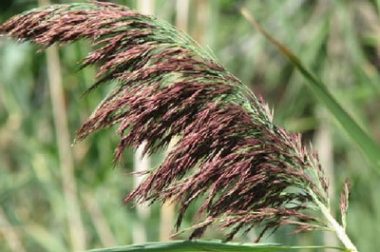
Vijai Pandian, Mark Renz
Revised: 12/1/2011
Item number: XHT1205
What is invasive phragmites? Invasive phragmites (Phragmites australis subsp. australis) or common reed is a tall, perennial grass that aggressively colonizes and forms dense stands in freshwater wetlands. It is found throughout North America, but is most common along the east coast of the US and in the Great Lakes region. In Wisconsin, invasive phragmites can be found along shorelines of lakes, exposed lake beds, marshes, streams, swamps, rivers, roadside ditches, heavily disturbed sites and other low, wet areas. Invasive phragmites harms the environment by reducing wildlife habitats, decreasing plant diversity, and altering water levels by trapping sediments. In addition, invasive phragmites can be a fire hazard. Stands along roadsides can obstruct the view of drivers, leading to automobile accidents, and stands along shorelines can reduce property values by blocking lake views, and restricting access for swimming, fishing and hunting. Invasive phragmites is a subspecies of a Eurasian form of the grass (known as “haplotype M”) that is believed to have been accidentally introduced into North America in the early 19th century. A native phragmites (Phragmites australis subsp. americanus) once grew abundantly in North America, but currently is rare because it has been displaced by invasive phragmites.
What does invasive phragmites look like? Invasive phragmites plants grow up to 15 feet tall and form grayish-purple, feather-like flower heads in late July. These plumes are five to 16 inches long and develop dark brown seed heads at maturity. Invasive phragmites leaves have sheaths that are wrapped tightly around the stalk, and leaf blades that are rough-margined, flat, and linear in shape with a gray-green color. At the base of each leaf blade, a fringe of hairy ligules is present with no auricle clasping the stalk. To distinguish native phragmites from invasive phragmites, closely observe the plant’s stalk. Stalks of invasive phragmites plants are rigid, rough, dull, tan in color, and hollow inside. Native phragmites plants develop non-rigid, smooth, lustrous reddish-colored stalks during the growing season.
How does invasive phragmites reproduce and spread? Invasive phragmites primarily reproduces vegetatively by producing below-ground rhizomes and above-ground stolons. Although invasive phragmites produces seeds, these seeds are rarely able to germinate to form new plants. The rhizomes of invasive phragmites are stout, scaly, and grow actively during late summer through early winter forming a dense underground mat. Each node of the rhizomes can produce a new bud in the fall that will remain dormant during winter and produce a new plant in the spring. Rhizomes can grow as much as six feet per year and eventually reach more than 60 feet in length in an established stand. They can also penetrate more than six feet deep into the soil. Human actions like dredging and disking in wetlands, as well as natural actions (e.g., wave movement) can break the rhizomes into many pieces and help disperse the plant to new locations.
How do I control invasive phragmites? Small patches of invasive phragmites in home backyard settings can be controlled using the bundle, cut and chemical treatment method. First, bundle canes together tightly at waist height with twine. Next, cut the canes just above the twine. Finally, immediately treat the cut ends of the canes with an appropriate glyphosate product labeled for the site where the invasive phragmites is growing. If the patches are in standing water or in a wet area, use a glyphosate product labeled for aquatic use (e.g., Rodeo®) and be sure to obtain a permit from the Wisconsin DNR before treating the patch. For dry land sites, terrestrial glyphosate products (e.g., Roundup®) can be used and no permit is required. Herbicides solutions need to contain at least 20% glyphosate to be effective. Always read the label on the herbicide that you select before applying the product to ensure that you apply the herbicide in the safest, most effective manner possible. The ideal time to bundle, cut and chemically treat invasive phragmites is from late July until September before the first killing frost occurs. Once plants have been treated with an herbicide, allow at least two weeks for the canes to die. Once canes have died, they can be mowed using a small mower or weed whip. In wet sites, wait until the ground is frozen to mow. Bag the mowed plants in a clear garbage bag, label the bag “INVASIVE PLANTS” and dispose of the plants in a landfill. DO NOT compost this material. Evaluate the success of your treatment the following growing season. If there is any re-growth, treat with a foliar application of glyphosate (again with proper permitting and using the proper site-specific product). Studies have shown that repeated mowing of an invasive phragmites stand without herbicide treatment is an ineffective control strategy. Invasive phragmites rhizomes simply re-sprout, and repeated mowing actually increases the density of the invasive phragmites patch.
or contact your local Wisconsin Department of Natural Resources (DNR) representative for advice.
Additional Images
Download Article

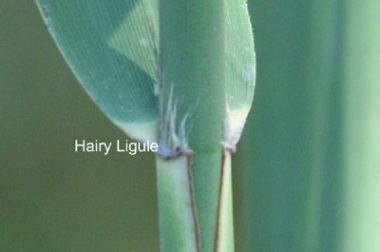




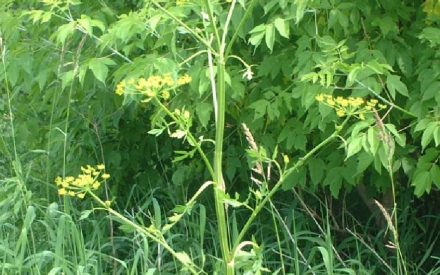 Wild Parsnip
Wild Parsnip Japanese Knotweed:
Japanese Knotweed: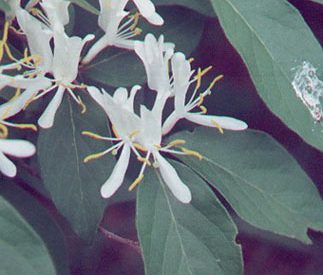 Invasive Exotic Shrub Honeysuckles
Invasive Exotic Shrub Honeysuckles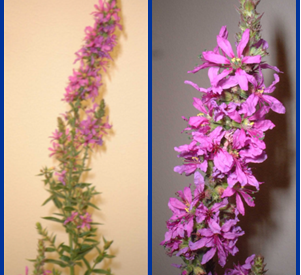 Purple Loosestrife
Purple Loosestrife


